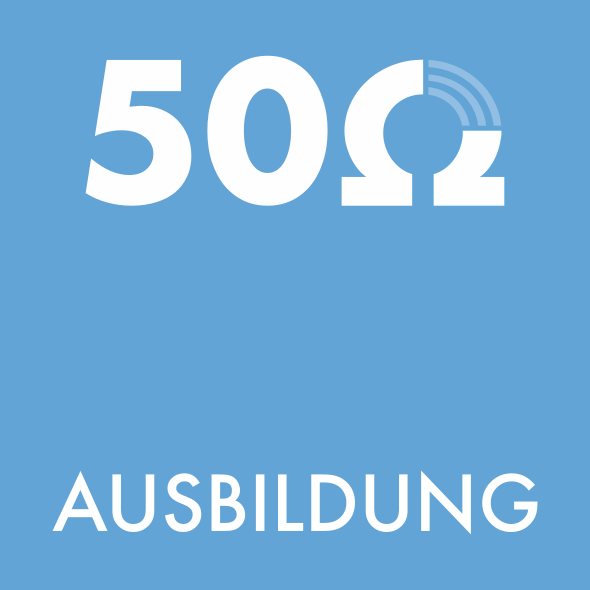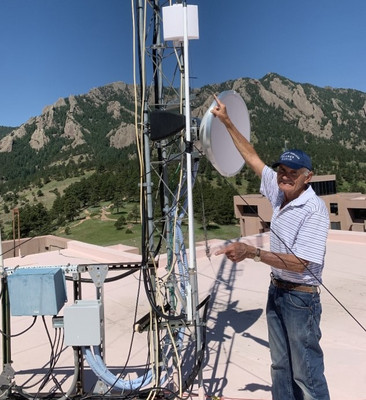In den letzten Monaten war ich sehr krank. Anfang des Monats wurde ich im Krankenhaus an der Bauchspeicheldrüse und der Milz operiert. Die Chirurgen hatten mich gewarnt, dass es ein langsamer Genesungsprozess werden würde. Nach etwa einer Woche im Krankenhaus war ich kurz davor, nach Hause entlassen zu werden. Ups, schwerer Rückfall - ich bekam starke innere Blutungen. In dieser Nacht musste ich zweimal schnell in den Operationssaal gebracht werden, bevor das Leck gestoppt werden konnte. Jetzt bin ich endlich wieder zu Hause in Janets guter Obhut, aber ich sehe keine Fortschritte bei der Genesung. Langsam schleiche ich mit einer Gehhilfe herum und verbringe viel Zeit in horizontaler Polarisation. Gelegentlich habe ich Lust, etwas für diesen Newsletter zu schreiben. Ich werde versuchen, Ihnen, unseren treuen Lesern, weiterhin zu schreiben - hoffentlich mindestens einmal im Monat.
Jim Andrews, KH6HTV, ATV-Newsletter-Herausgeber
ISS-Astronauten
Die Besatzung der Axiom Mission 4 (Ax-4) soll im Mai an Bord eines SpaceX Dragon-Raumschiffs starten und zur Raumstation ISS fliegen. Nach dem Andocken planen die privaten Astronauten, bis zu 14 Tage an Bord des Weltraumlabors zu verbringen und eine Mission durchzuführen, die Wissenschaft, Öffentlichkeitsarbeit und kommerzielle Aktivitäten umfasst. Mit dieser Mission wird der erste ISRO-Astronaut im Rahmen einer gemeinsamen Unternehmung der NASA und der indischen Raumfahrtbehörde zur Station geschickt. An Bord der privaten Mission befinden sich auch die ersten Astronauten aus Polen und Ungarn, die an Bord der Raumstation bleiben sollen.
NASA
Erfolgreiche Amateurfunkkontakte für das FRAM2-Raumschiff
Nur wenige Stunden nach dem Start des privaten Fram2-Raumschiffs aus den USA am 31. März begann die Astronautin Rabea Rogge, LB9NJ/KD3AID, mit den geplanten Übertragungen von SSTV-Bildern, die im Rahmen eines Schüler- und Hochschulwettbewerbs durchgeführt wurden. Zu den ersten QSOs der Fram2 gehörte jedoch ein Sprechfunkkontakt mit dem DKØTU-Amateurfunkclub an der Technischen Universität Berlin. Die kurze Fragestunde aus dem All fand an der Universität statt, an der die in Deutschland geborene Astronautin einst selbst studiert hatte.
Ein Großteil der Amateurfunkaktivitäten der Fram2 war als SSTV-Übertragungen aus dem Weltraum konzipiert, die die Aussichten der vier Astronauten auf die Polarregionen wiedergaben. Die Übertragungen wurden in Form von Puzzlestücken ausgestrahlt, die die Schüler auf der ganzen Welt dazu aufforderten, sie zu einem vollständigen Bild zusammenzusetzen. Die Fram2-Mission ist nach dem in Norwegen gebauten Schiff "Fram" benannt, das im späten 19. und frühen 20. Jahrhundert Forscher in die Polarregionen brachte. Dieser Amateurfunkkontakt - und alle folgenden Übertragungen - bildeten eine andere Form der Erforschung. In Erwartung der Stilllegung der Internationalen Raumstation bis 2030 haben Funkamateure nach anderen Möglichkeiten für Funkkontakte aus dem Weltraum gesucht.
Um das QSO zwischen der Astronautin und den Studenten in Berlin zu verfolgen, öffne den folgenden Link:
https://www.youtube.com/watch?v=bmyXfmfhTJE
Quelle: John Williams, VK4JJW
AR-Newsline
Video mit Rabea Rogge (deutsch)
SpaceX Fram2 Crew Interview (english)
BATC stand at the HamRadio 2025 exhibition
The BATC will have a stand in Hall A1 at the HamRadio 2025 exhibition at Friedrichshafen on Friday 27 June and Saturday 28 June. The stand will be manned by Dave G8GKQ and Benno PA3FBX and will have demonstrations of the Portsdown, Ryde and PicoTuner. There will also be a small stock of BATC shop items for sale (cash only, Pounds or Euros). In addition to the advice available on the stand, there will be a dedicated ATV lecture stream from noon until 3:30 pm in the Österreiche Room on the Friday. This room is just up the stairs from the main entrance hall. It is hoped to stream the lectures on the BATC streamer. The draft lecture program includes:
DATV-receiver for everybody. Rainer DL5NBZ
From bench to deployment -The HB9TV-1 Linear Transponder. Michel HB9DUG
PicoTuner – the two-channel version of MiniTiouner Dave G8GKQ
Portsdown – latest developments. Dave G8GKQ
The lectures will be delivered in English. HamRadio has the biggest flea market that I have ever seen at any radio event; It is also a great social occasion to meet up with contacts from all across the world. Travel to Friedrichshafen from the UK looks challenging, but is actually quite easy. Fly to Zurich, get a train to Romanshorn, and then get the ferry across Lake Constance to Friedrichshafen; this makes for a pleasant stress-free journey. Public transport in Friedrichshafen is good with buses direct from the town centre to the exhibition hall. Look forward to seeing you there.
Dave, G8GKQ
CQ-TV 287
ARISS contact is scheduled with participants from the Pan-African Citizen Science e-lab in more than 50 countries in Africa
April 15, 2025, Amateur Radio on the International Space Station (ARISS) has received schedule confirmation for an ARISS radio contact between an astronaut aboard the International Space Station (ISS) and participants that are part of the Pan-African Citizen Science e-lab. ARISS conducts 60-100 of these special amateur radio contacts each year between students around the globe and crew members with ham radio licenses aboard the ISS.
The hosting organization, Pan-African Citizen Science e-Lab (PACS e-Lab) (in partnership with the African Astronomical Society (AFAS)), is a nonprofit online educational platform dedicated to promoting STEM education through hands-on activities in astronomy and space science across Africa. Participants that are engaged in PACS e-Lab programs includes over a thousand individuals from various educational levels, ranging from secondary schools to tertiary institutions (ages 12 years and older), and are located in more than 50 countries in Africa. PACS e-Lab is the largest initiative of its kind on the continent, actively involving African teachers, students, and space enthusiasts in citizen science activities. The audience for the ARISS contact event will include the entire PACS e-Lab community across Africa, the AFAS community, and other stakeholders interested in STEM education.
This will be a telebridge contact via Amateur Radio allowing students to ask their questions of astronaut Nichole Ayers, amateur radio call sign KJ5GWI. The downlink frequency for this contact is 145.800 MHz and may be heard by listeners that are within the ISS-footprint that also encompasses the telebridge station.
The ARISS amateur radio ground station (telebridge station) for this contact is in Casale Monferrato, Italy. The amateur radio volunteer team at the ground station will use the call sign, IK1SLD to establish and maintain the ISS connection.
The ARISS radio contact is scheduled for April 18, 2025 at 11:26 am WAT (Abuja, Nigeria) (10:26 UTC).
As time allows, students will ask these questions:
1. How does light pollution affect your view of Earth from space?
2. What do you do for fun on the ISS?
3. How do you drink water in space?
4. How does being in space affect your mental health?
5. What is the most important experiment happening on the ISS at the moment?
6. Will humans ever travel across the stars?
7. What inspired you to become an astronaut, and what steps should a young, ambitious person from Africa take to become an astronaut?
8. Has the ISS ever been impacted by space debris?
9. Do stars look different from space compared to how we see them on Earth?
10. How do astronauts sleep aboard the ISS?
11. What is the one thing you personally find fascinating about this job?
12. How do astronauts maintain connections with their families and loved ones during extended missions aboard the ISS?
13. How has the Overview Effect shaped your daily life on the ISS?
14. What experiment, mission, or project are you currently working on aboard the ISS?
15. How do astronauts withstand radiation and cosmic particles on the ISS?
16. How do you deal with solar storms on the ISS?
17. Do Microorganisms survive outside surfaces of the ISS?
18. When the ISS is decommissioned in 2030, will there be a new one?
19. Could you mention some impact of ISS research on humanity?
20. What does space smell like?
21. What's the most surprising thing you've seen from the ISS?
22. Have you ever felt fear in space? How do you stay focused and manage it emotionally?
23. What is the fate of the ISS? Will it be sunk in the Atlantic Ocean, or will another one be built?
24. How does microgravity affect your sense of taste on the ISS?
25. Does microgravity affect problem-solving in physics and engineering?
26. How do you wash your clothes in space?
27. How can space-based muscle growth studies help treat muscle diseases on Earth?
28. How does prolonged isolation in space affect your perception of time? Have you noticed some changes in your sense of time compared to Earth?
29. How does hygiene on the ISS impact skin and breathing?
30. How do you determine directions on the ISS? Is it similar to how we do on Earth?
31. How do astronauts cope with space fog?


